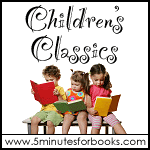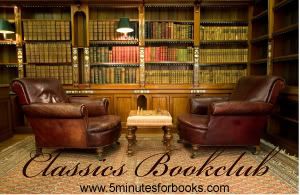This year was the first in which I utilized Goodreads' Reading Challenge program. If memory serves, I originally set my goal at 35 books, wanting to err on the conservative side of things. But then a good friend of mine suggested that I could do better than that so I upped it to 50 which made her happier. Ha! (Everyone needs a friend who will gently push them in the right direction!) Turns out 50 was just about right. I managed 52 books - that's including books read aloud with my kidlets - giving me a 104% success rate on Goodreads! My little over achieving self is made happy.
Now, let's get to the point of all of this. What were my favorite reads of 2018? Here they are, in no particular order:
FAVORITE WORK OF FICTION
Hands down, no contest, it was A Gentleman in Moscow. The title is linked to my review of the book, which is remarkable because I didn't write very many reviews at all this year. I read A Gentleman in Moscow back in March which honestly feels like a lifetime ago. This is a beautiful piece of work and I highly recommend it.
FAVORITE PIECE OF NON-FICTION
This one is always harder because each piece of non-fiction that I ended up reading was read for a different reason and was impacting in different ways. However, I will do my best to narrow it down and go with The Pursuit of Holiness (which, when I re-read my review again, makes sense). I definitely recommend this read if you've never picked it up.
FAVORITE BOOK READ ALOUD W/ THE KIDS
TOUGH QUESTION! I'll go with The Adventures of Hamish and Mirren which we read ahead of our family trip to Scotland. This was such a rich, delicious and entertaining read! Highly, highly, highly recommended!
LEAST FAVORITE BOOK
Well, there are four that I didn't quite care for for one reason or another but if I were to issue a warning, I guess I'd place The Royal Rabbits of London at the top of the list. I don't really have anything much to say about it except that it's stupid. Cute idea in theory but it is slap-stick in the worst possible way appealing to the worst in the reader instead of to the best. I hoped to read it with my kids. Instead I skimmed it by myself and then tossed it.
Runners up:
- Raven, Seek Thy Brother by Gavin Maxwell. This was the third book in a series of memoirs penned by Maxwell, a Scottish author who raised and cared for wild otters up on the Northern Coast. The first book (Ring of Bright Water) was brilliant. The second was disappointing. The third was just depressing as Maxwell showcased his inability to love people over animals and how to take relationships for granted.
- When People are Big and God is Small. This book I found imbalanced in its approach to God and humanity. It pre-supposes that the most holy approach to life is to set aside every God-given emotion that you possess, and the wisdom gained in life to apply wisdom to life's circumstances, and suggests that we must all behave like Lt. Commander Data from Star Trek instead. As we just weren't made that way (on purpose!), I couldn't take the author very seriously. I wouldn't recommend this read as a result.
- Brick by Brick: How LEGO Rewrote the Rules of Innovation and Conquered the Global Toy Industry, by David C. Robertson. MAJOR SNOOZE ALERT! I like non-fiction reads and I enjoy learning about how business have grown and expanded themselves but this book was boring. Absolutely boring. Save yourselves a read and find a different title about the Lego Company to enjoy.
FAVORITE NEW-TO-ME-AUTHOR
Enid Blyton. The kids and I read her Christmas Stories over the month of December and I honestly cannot ever remember reading a better book of short stories, aside from E. Nesbit's The Book of Dragons (linked to review). If you know me and know my love of The Book of Dragons, you will recognize this as high praise. When we were traveling in Scotland I picked up Blyton books wherever we went and we are now in the process of devouring them! I bought some of her Famous Five books for my 9 year old who started reading them and specifically requested that he be given more titles from the series for Christmas. Ye who know how to give good gifts to your children . . .
Read a Blyton and change your reading world! (Possible Reading Slogan for 2019.)
I'll stop there. If you're curious to see my entire 2018 Reading List just click on that link there and it'll take you to it. Meanwhile, if there's a book you think I ought to consider reading in 2019 I am happy to hear of it! Leave me a comment or shoot me a note if you please.
HAPPY NEW READING YEAR to everyone!!!










































